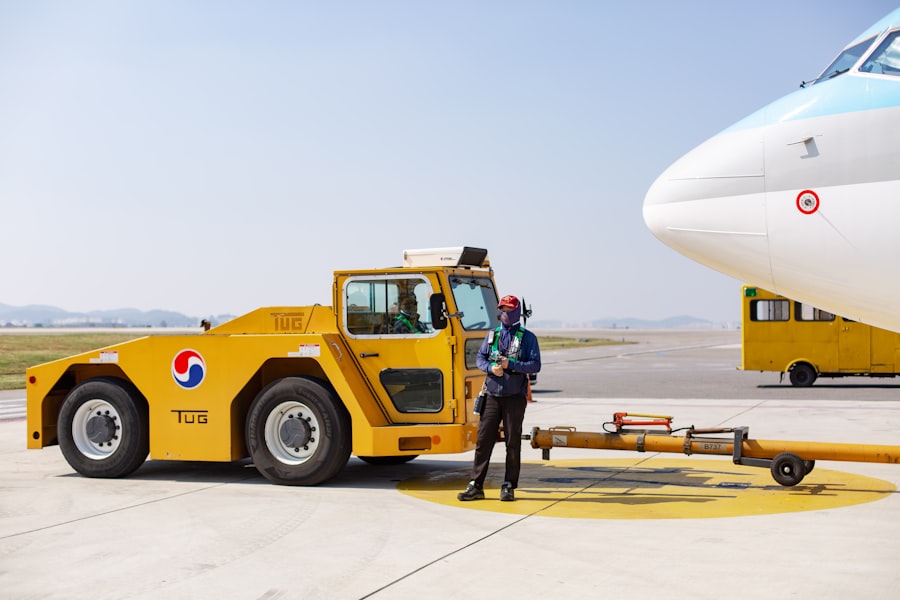Korea Aerospace Industries (KAI) stands as a pivotal player in the global aerospace sector, representing South Korea’s ambitions and capabilities in aviation and defense. Established to foster the development of indigenous aerospace technologies, KAI has evolved into a comprehensive aerospace manufacturer, contributing significantly to both military and civilian aviation. The company is not only a symbol of national pride but also a testament to South Korea’s rapid technological advancements and industrial growth over the past few decades.
With a focus on innovation, quality, and international collaboration, KAI has positioned itself as a competitive entity in the global aerospace market. The significance of KAI extends beyond mere manufacturing; it embodies the strategic vision of South Korea to enhance its defense capabilities while simultaneously expanding its commercial aviation sector. As countries around the world increasingly prioritize self-reliance in defense and aerospace technologies, KAI’s role becomes even more critical.
The company’s diverse portfolio includes aircraft design, production, and maintenance, showcasing its multifaceted approach to meeting the demands of both domestic and international markets. This article delves into the history, products, technological innovations, partnerships, and future outlook of Korea Aerospace Industries, providing a comprehensive understanding of its impact on the aviation industry.
Key Takeaways
- Korea Aerospace Industries (KAI) is a leading aerospace company in South Korea specializing in aircraft manufacturing and aerospace technology.
- Established through a government-industry partnership, KAI has a rich history of developing military and civilian aircraft.
- The company offers a range of products including fighter jets, helicopters, and unmanned aerial vehicles, along with maintenance and support services.
- KAI is known for its technological innovations, advancing aerospace design, avionics, and manufacturing processes.
- Through global partnerships and future projects, KAI aims to expand its influence and contribute significantly to the global aviation industry.
History and Background of Korea Aerospace Industries
Korea Aerospace Industries was founded in 1999 through a merger of several aerospace companies, including the Korea Aerospace Corporation and the Korean Airspace Industry. This consolidation aimed to streamline operations and enhance competitiveness in an increasingly globalized market. The establishment of KAI marked a significant milestone in South Korea’s aerospace journey, as it sought to develop indigenous capabilities in aircraft manufacturing and design.
Initially focused on military aircraft, KAI quickly expanded its horizons to include civilian aviation, reflecting the dual nature of its mission. The early years of KAI were characterized by strategic partnerships with established global aerospace firms. Collaborations with companies such as Boeing and Lockheed Martin provided KAI with invaluable expertise and technology transfer, enabling it to build a solid foundation for future growth.
One of the company’s first major projects was the development of the T-50 Golden Eagle, a supersonic advanced trainer aircraft that has since gained recognition for its performance and versatility. This aircraft not only showcased KAI’s engineering capabilities but also served as a stepping stone for further advancements in military aviation.
Products and Services Offered by Korea Aerospace Industries

KAI’s product portfolio is diverse, encompassing a wide range of aircraft designed for various applications. The T-50 series, which includes the T-50 Golden Eagle and its variants, is one of KAI’s flagship products. This advanced trainer aircraft is designed for pilot training and light combat missions, featuring cutting-edge avionics and performance characteristics that rival those of more established military aircraft.
The T-50 has been exported to several countries, including Indonesia and the Philippines, highlighting KAI’s growing presence in the international defense market. In addition to military aircraft, KAI has made significant strides in the civilian aviation sector. The company is actively involved in the development of regional jets and unmanned aerial vehicles (UAVs).
The Korean Utility Helicopter (KUH) is another notable product that underscores KAI’s commitment to versatile aviation solutions. Designed for various missions, including search and rescue, medical evacuation, and troop transport, the KUH exemplifies KAI’s ability to meet diverse operational requirements. Furthermore, KAI offers maintenance, repair, and overhaul (MRO) services for its aircraft, ensuring that customers receive comprehensive support throughout the lifecycle of their products.
Technological Innovations and Advancements
| Technological Innovation | Year Introduced | Key Metrics | Impact Area | Current Status |
|---|---|---|---|---|
| Artificial Intelligence (AI) | 1956 (concept) | Accuracy in image recognition: 99.9% (2023) | Healthcare, Automation, Finance | Rapidly evolving, widespread adoption |
| 5G Wireless Technology | 2019 | Peak download speed: 10 Gbps | Telecommunications, IoT, Smart Cities | Global rollout ongoing |
| Quantum Computing | 2019 (commercial prototypes) | Qubits: 127 (IBM, 2023) | Cryptography, Drug Discovery | Experimental, early-stage commercial use |
| Renewable Energy Technologies | 2000s (modern advances) | Solar panel efficiency: 22-25% | Energy, Environment | Increasing adoption worldwide |
| CRISPR Gene Editing | 2012 | Editing accuracy: >90% | Biotechnology, Medicine | Clinical trials ongoing |
KAI has consistently prioritized research and development (R&D) as a cornerstone of its operations. The company invests heavily in innovative technologies to enhance its product offerings and maintain competitiveness in the global market. One area where KAI has made significant advancements is in avionics systems.
By integrating state-of-the-art technology into its aircraft, KAI ensures that pilots have access to advanced navigation, communication, and situational awareness tools that enhance operational effectiveness. Moreover, KAI has embraced digital transformation within its manufacturing processes. The implementation of advanced manufacturing techniques such as additive manufacturing (3D printing) and automation has streamlined production workflows and improved efficiency.
These innovations not only reduce production costs but also enable KAI to respond more swiftly to changing market demands. The company’s commitment to sustainability is also evident in its efforts to develop eco-friendly technologies, such as hybrid propulsion systems for future aircraft designs.
Global Partnerships and Collaborations
KAI’s growth trajectory has been significantly influenced by its strategic partnerships with leading aerospace companies worldwide. Collaborations with firms like Boeing have facilitated technology transfer and knowledge sharing, allowing KAI to enhance its engineering capabilities. For instance, KAI’s partnership with Boeing on the T-50 program involved joint development efforts that leveraged Boeing’s expertise in advanced aerodynamics and systems integration.
In addition to partnerships with established aerospace giants, KAI has also engaged in collaborative projects with various governments and defense agencies around the world. These collaborations often involve co-development agreements for military aircraft or joint ventures aimed at expanding market reach. For example, KAI’s collaboration with Indonesia on the development of the Indonesian Fighter Aircraft (IFX) project exemplifies how international partnerships can lead to shared technological advancements while fostering local industry growth.
Future Plans and Projects

Looking ahead, KAI has ambitious plans to expand its product offerings and enhance its global presence. The company is actively pursuing opportunities in emerging markets where demand for advanced military and civilian aircraft is on the rise. One of KAI’s key future projects is the development of a next-generation fighter jet known as the KF-X program.
This project aims to create an advanced multirole fighter that incorporates cutting-edge stealth technology and advanced avionics systems. The KF-X program represents a significant investment in South Korea’s defense capabilities and is expected to play a crucial role in bolstering national security. In addition to military projects, KAI is also exploring opportunities in the commercial aviation sector.
The company is working on developing regional jets that cater to the growing demand for short-haul air travel in Asia-Pacific markets. By leveraging its expertise in aircraft design and manufacturing, KAI aims to capture a share of this lucrative market segment while contributing to the overall growth of South Korea’s aviation industry.
Impact on the Aviation Industry
Korea Aerospace Industries has had a profound impact on both the domestic and global aviation landscape. Domestically, KAI has played a crucial role in establishing South Korea as a significant player in aerospace manufacturing. The company’s success has spurred growth in related industries, including avionics suppliers, component manufacturers, and MRO service providers.
This ecosystem not only creates jobs but also fosters innovation across various sectors within South Korea. On a global scale, KAI’s entry into international markets has contributed to increased competition among aerospace manufacturers. By offering high-quality products at competitive prices, KAI challenges established players while providing countries with viable alternatives for their defense needs.
The successful export of KAI’s aircraft demonstrates that emerging aerospace manufacturers can compete effectively on the world stage, reshaping traditional dynamics within the industry.
Conclusion and Future Outlook
As Korea Aerospace Industries continues to evolve, its future outlook remains promising. With ongoing investments in R&D and strategic partnerships with global aerospace leaders, KAI is well-positioned to capitalize on emerging opportunities in both military and civilian aviation markets. The company’s commitment to innovation will likely drive further advancements in aircraft design and manufacturing processes.
Moreover, as geopolitical dynamics shift and nations prioritize self-reliance in defense capabilities, KAI’s role will become increasingly vital. The company’s focus on developing next-generation aircraft aligns with global trends toward modernization and technological advancement in military aviation. As it navigates these challenges and opportunities, KAI will undoubtedly continue to shape the future of aerospace not only within South Korea but also on a global scale.




